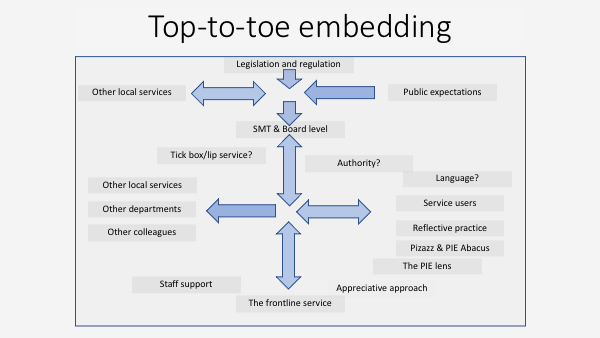The principal task of the PIE lead within any agency or network will usually be to oversee the roll out of the PIE approach through all the services* in the grouping.
In almost all cases, some services will be further advanced, and in some cases much further advanced. It is then the task of the PIE lead to support development, using some discretion over where to focus most effort, whilst aiming to maintain some coherence in vision of the agency as a whole.
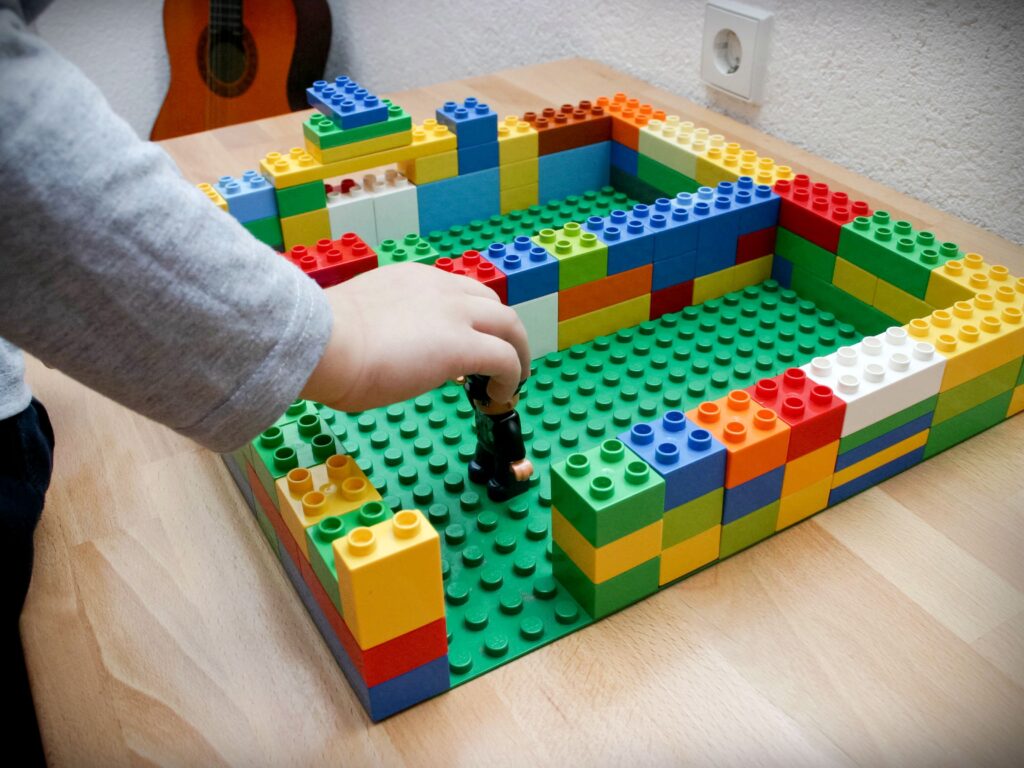
At times, that task will be described as that of ‘implementing the PIE’ in any agency – a term that you will find we do not on the whole like, as it implies a fixed goal, worked out in advance, and carried out faithfully to plan by the staff ‘on the ground’.
The idea that ‘being a PIE’ can be decided upon and then imposed from above by diktat is a mistaken belief, held often by senior managers and commissioners. But in fact this runs counter to the real spirit of PIEs. It ignores the central importance of the process.
The Pizazz is an instrument carefully designed to guide that process. With the Pizazz, services can work through five stages of self-assessment and service planning that will support them in making progress on their own terms.
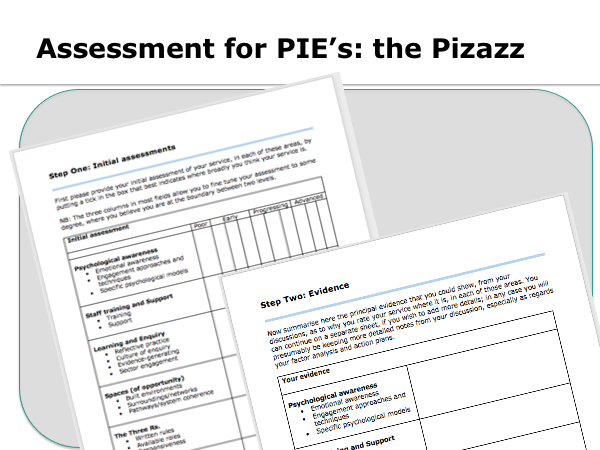
An assessment of a service does not need to be an intensive and time consuming process. For some thoughts on how simple, informal and natural the process can be, see “The coffee break Pizazz’, on the PIElink
Similarly, although the PIE approach is essentially a holistic model, with all parts contributing, that does not mean that every service at very stage must necessarily be working on the whole picture.
When revisiting an assessment after a period of work – carrying out the previous assessment’s action plan – it is not necessarily appropriate to revisit and review all the plans in all ages. Some changes are simply much quicker to introduce than others, and the pace of review can be determined by the time taken to set out on any course.
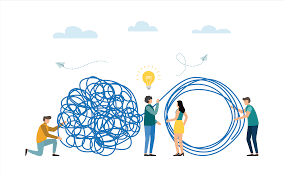
When a PIE lead is trying to decide the best way to encourage series to develop as PIEs, it may be helpful to have at your disposal a range of ways to encourage, rather than to impose, the approach.
But probably most helpful of all will be the opportunity to talk it over with others – your peers – and that is the ambition behind suggesting a PIE leads SIG : HERE
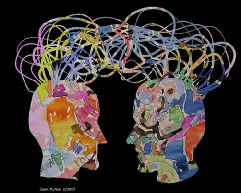
NB: For more advanced services, developing as a PIE means not just encouraging development in frontline services, but taking this way of thinking throughout the whole of the agency.
This we call ‘Top to toe embedding’ throughout the agency. On the PIElink, there is a useful account of some of the earlier forum discussions on what this seems to entail.
